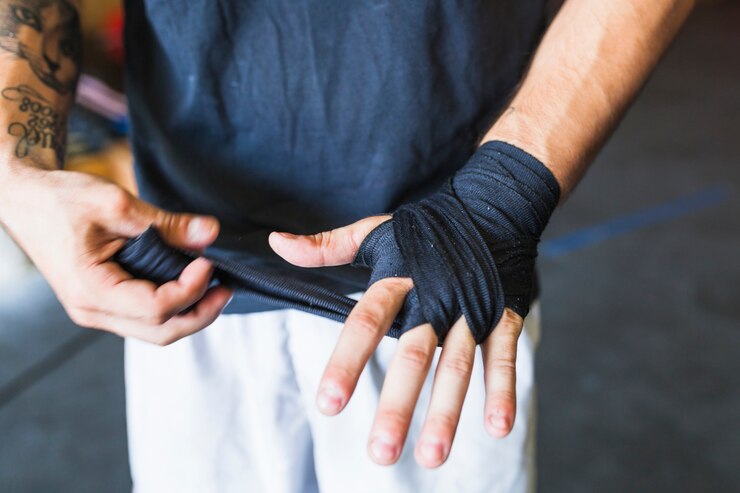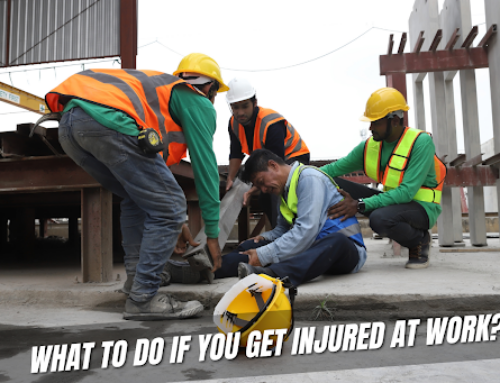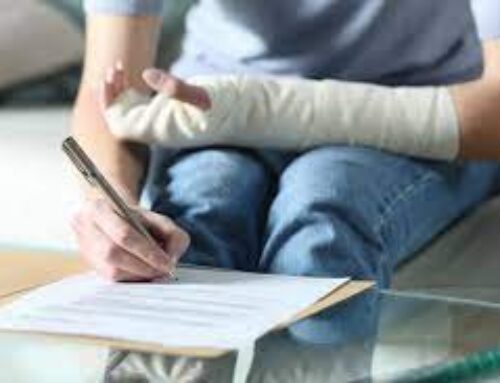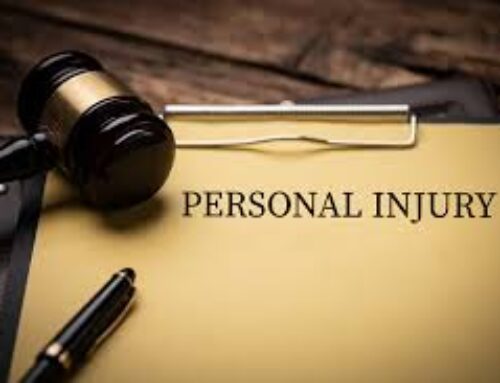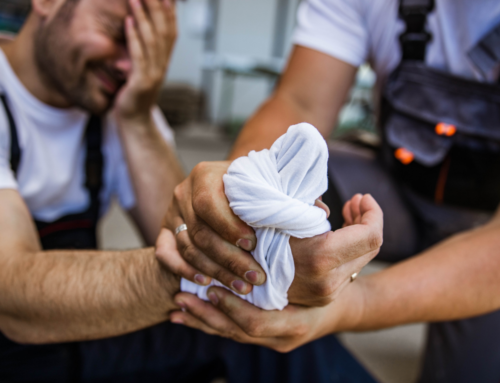Personal injury damage happens when someone gets hurt because someone else was careless or did something on purpose. The personal injury settlement involves different accidents, like car crashes, slips, and falls, or mistakes made by doctors. When you’re hurt because of someone else’s actions, you might be able to get money to help pay for things like doctor bills, missed work, and the pain you’ve gone through. But getting the right amount of money can be hard. That’s why it’s important to know how to get as much money as possible in your injury lawsuit
Why Getting the Most Money Matters
Maximizing settlement in personal injury damage is crucial because it ensures that the injured party receives adequate compensation to cover their losses. Settlements can provide compensation for medical expenses, lost wages, pain and suffering, emotional distress, and other damages incurred as a result of the accident or injury. By maximizing the settlement amount, individuals can better address their financial needs and achieve a sense of justice for the harm they have endured.
The purpose of this blog is to offer actionable tips and strategies to help individuals maximize their settlement in personal injury cases. Whether you’re navigating the personal injury claim process on your own or seeking legal representation, understanding the factors that influence settlement outcomes and knowing how to advocate for your rights can significantly impact the outcome of your injury lawsuit.
Types of Personal Injury Cases
Personal injury cases encompass a wide range of situations in which individuals suffer harm or injury due to another party’s negligence, recklessness, or intentional misconduct. Here are some common types of personal injury cases:
1. Motor Vehicle Accidents: Motor vehicle accidents, including car crashes, truck accidents, motorcycle collisions, and pedestrian accidents, are among the most common causes of personal injury. These accidents can result in a variety of injuries, ranging from minor cuts and bruises to severe traumatic injuries and fatalities.
2. Slip and Fall Accidents: Slip and fall accidents occur when individuals slip, trip, or fall on someone else’s property due to hazardous conditions such as wet floors, uneven surfaces, inadequate lighting, or debris. Property owners must maintain safe premises and may be held liable for injuries sustained on their property.
3. Medical Malpractice: Medical malpractice occurs when healthcare providers fail to meet the standard of care expected in their profession, resulting in harm or injury to patients. Examples of medical malpractice include surgical errors, misdiagnoses, medication errors, birth injuries, and anesthesia mistakes.
4. Product Liability: Product liability cases involve injuries caused by defective or dangerous products. This can include defective consumer goods, pharmaceutical drugs, medical devices, automotive parts, and other products that cause harm to consumers due to design defects, manufacturing defects, or inadequate warnings.
5. Workplace Accidents: Workplace accidents occur in various occupational settings and can result in injuries ranging from minor sprains and strains to catastrophic injuries or fatalities. Common workplace accidents include falls from heights, machinery accidents, electrical accidents, and exposure to hazardous substances.
6. Dog Bites and Animal Attacks: Dog bites and animal attacks can cause serious injuries, including lacerations, puncture wounds, infections, and permanent scarring or disfigurement. Pet owners are typically held liable for injuries caused by their animals, regardless of whether the animal has a history of aggression.
7. Premises Liability: Premises liability cases involve injuries sustained on someone else’s property due to dangerous conditions such as slippery floors, inadequate security, defective staircases, or insufficient lighting. Property owners must maintain safe premises and may be held liable for injuries caused by their negligence.
8. Assault and Battery: Assault and battery cases involve intentional acts of violence or physical harm inflicted on another person. Victims of assault and battery may be entitled to compensation for medical expenses, pain and suffering, and other damages resulting from the attack.
Each case is unique, and the specific circumstances surrounding the injury will determine the legal principles and strategies involved in pursuing a personal injury claim process for compensation.
What to Expect During the Settlement Process

During the personal injury claim process in a personal injury case, several key steps typically unfold, each with its considerations and potential outcomes. Understanding what to expect can help you navigate this process more effectively and make informed decisions about your case. Here’s what you can anticipate during the personal injury claim process:
1. Initial Evaluation: The process often begins with an initial evaluation of your case by either yourself or your attorney. This evaluation involves gathering and reviewing relevant information such as medical records, accident reports, witness statements, and any other evidence related to your injury notice of claim.
2. Demand Letter: Once you’ve assessed the extent of your damages and liability, your attorney may draft a demand letter outlining your personal injury claim process. This letter typically includes a detailed explanation of the accident, the injuries sustained, the medical treatment received, and the damages incurred. It also specifies the amount of compensation you are seeking to resolve the claim.
3. Negotiation Phase: After sending the demand letter, the negotiation phase begins. The other party, typically the insurance company representing the at-fault party, may respond with a counteroffer or request for additional information. Negotiations may involve back-and-forth communication between your attorney and the opposing party’s representatives as they attempt to reach a mutually acceptable injury settlement agreement.
4. Counteroffers and Settlement Discussions: Throughout the negotiation process, counteroffers and injury settlement discussions may occur. Your attorney will review each offer carefully, considering the strengths and weaknesses of your case, the extent of your damages, and the chance of success in personal injury court. They will then advise you on whether to accept, reject, or counter the offer based on your best interests.
5. Mediation or Arbitration: If initial negotiations do not result in a satisfactory settlement, alternative dispute resolution methods such as mediation or arbitration may be pursued. This personal injury claim process involves a neutral third party facilitating discussions between the parties in an attempt to reach a resolution outside of personal injury court.
6. Final Settlement Agreement: If a settlement is reached, both parties will need to sign a formal agreement outlining the terms and conditions of the injury settlement. This agreement typically includes details such as the amount of compensation, the release of liability, and any other relevant provisions.
7. Disbursement of Funds: Once the permanent injury settlement amount is finalized, the funds are typically given to the injured party. Depending on the terms of the agreement, the settlement proceeds may be paid in a lump sum or structured payments over time.
8. Case Closure: With the settlement reached and funds disbursed, the case is considered closed. The injured party and their attorney will ensure that all outstanding medical bills, liens, and other obligations are satisfied before finalizing the closure of the case.
Understanding the Factors Affecting Settlements
- Severity of injuries
The seriousness of your injuries plays a big role in determining how much money you might get in an injury settlement. If you’ve suffered severe injuries that require extensive medical treatment, rehabilitation, or long-term care, you’re likely to receive a larger settlement to cover these costs. Injuries that result in permanent disability or impairment can also increase the amount of compensation you’re entitled to.
- Liability determination
Liability refers to who is legally responsible for causing the accident that led to your injuries. If the other party is clearly at fault and their negligence can be proven, it strengthens your case for a higher personal injury settlement. However, if there’s a dispute over who was to blame or if you share some responsibility for the accident, it can impact the amount of compensation you receive. Understanding the legal concept of liability and being able to prove the other party’s fault is crucial in maximizing your injury settlement.
- Evidence and documentation
The strength of the evidence supporting your notice of claim greatly influences the outcome of your personal injury settlements negotiations. This includes documentation such as medical records, accident reports, witness statements, photographs of the scene, and any other evidence that proves the extent of your injuries and the circumstances of the accident. Thorough documentation strengthens your case and provides leverage during negotiations, increasing the chance of a favorable settlement offer.
In personal injury cases, damages refer to the monetary compensation awarded to the injured party to cover their losses resulting from the accident or injury. Understanding the different types of damages and their significance is essential for maximizing settlement in personal injury cases.
Personal Injury Damages
Personal injury damages are designed to compensate the injured party for the losses they have suffered as a result of the accident or injury lawsuit. These injury settlements aim to restore the injured party to the position they were in before the accident occurred, to the extent possible. Compensatory damages can be divided into two main categories: economic damages and non-economic damages.
- Economic Damages
Economic damages are tangible losses that can be quantified in monetary terms. These personal injury settlements typically include medical expenses, lost wages, property damage, and other out-of-pocket expenses incurred as a result of the accident or injury. Economic damages are relatively straightforward to calculate since they involve actual financial losses that can be documented with receipts, bills, and other financial records.
- Non-Economic Damages
Non-economic damages, on the other hand, are intangible losses that are more difficult to quantify. These injury settlements compensate the injured party for non-financial losses such as pain and suffering, emotional distress, loss of enjoyment of life, and loss of consortium. Non-economic damages aim to provide compensation for the physical and emotional harm experienced by the injured party, which may not have a specific monetary value but are nonetheless significant and deserving of compensation.
By thoroughly documenting economic losses and effectively presenting evidence of non-economic damages, injured parties can strengthen their case and negotiate for a fair and comprehensive injury lawsuit that fully compensates them for their losses and injuries.
Factors Influencing Settlement Amount
Severity and Extent of Injuries Sustained by the Plaintiff
When determining the personal injury settlement amounts in a personal injury lawsuit, the severity and extent of the plaintiff’s injuries play a crucial role. Here’s how these factors influence the compensation awarded:
- Severity of Injuries: The extent of physical harm suffered by the plaintiff directly impacts the personal injury settlement amounts. More severe injuries, such as fractures, traumatic brain injuries, or spinal cord damage, typically result in higher compensation to cover medical expenses, pain and suffering, and lost wages.
- Extent of Medical Treatment: The duration and intensity of medical treatment required for recovery also affect the personal injury settlements. Extensive surgeries, rehabilitation, and ongoing therapies often result in higher compensation to address past, current, and future medical expenses.
- Long-Term Impact: Permanent disabilities or impairments resulting from the injuries can significantly increase the settlement amount. Compensation may be awarded for diminished earning capacity, loss of enjoyment of life, and the need for long-term care or assistance.
- Emotional Distress: Emotional trauma, such as post-traumatic stress disorder (PTSD), anxiety, or depression, stemming from the accident and injuries can also impact the settlement. Compensation may be sought for mental anguish, emotional distress, and loss of consortium.
- Quality of Life: The impact of the injuries on the plaintiff’s quality of life is considered when determining compensation. Factors such as pain and suffering, loss of mobility, and the inability to engage in previous activities may warrant additional damages to address non-economic losses.
The severity and lasting effects of the injuries sustained by the plaintiff are critical factors in determining the appropriate settlement amount in a personal injury case.
The Benefits of Consulting with a Personal Injury Attorney
Having experienced legal representation with strong negotiation skills can significantly impact the outcome of settlement negotiations. The best personal injury lawyers can effectively advocate for the plaintiff’s interests, negotiate with insurance companies or defense attorneys on their behalf, and maximize the settlement amount. An attorney’s knowledge of personal injury laws and their ability to navigate the complexities of the legal system can make a substantial difference in securing a fair and favorable settlement for the injured party. Here’s how they contribute to achieving a favorable outcome:
Expertise in Personal Injury Law
A knowledgeable attorney specializing in personal injury law understands the legal complexities involved in such cases. They can navigate intricate legal procedures, statutes of limitations, and liability laws to build a strong case on behalf of the plaintiff.
Case Evaluation and Strategy
Best personal injury lawyers assess the merits of the case, gathering evidence, evaluating medical records, and consulting with experts to determine liability and personal injury damages. They develop a strategic approach tailored to the unique circumstances of the case to optimize the chances of a favorable settlement.
Effective Communication
Skilled negotiators communicate persuasively with insurance companies, opposing counsel, and other parties involved in the case. They present compelling arguments supported by evidence, advocate for the plaintiff’s rights, and negotiate for fair and just compensation.
Preparation and Advocacy
Diligent preparation is key to successful negotiations. Attorneys meticulously prepare legal documents, demand letters, and settlement proposals, highlighting the strengths of the plaintiff’s case and the extent of their damages. They advocate zealously for the plaintiff’s interests, striving to secure the maximum possible settlement.
Alternative Dispute Resolution
In some cases, attorneys may recommend alternative dispute resolution methods such as mediation or arbitration to resolve the case outside of court. Skilled negotiators adeptly represent the plaintiff’s interests during these proceedings, working towards a mutually acceptable settlement with the opposing party.
Litigation Experience
If negotiations fail to yield a satisfactory settlement, attorneys with litigation experience are prepared to pursue the case in court. They litigate aggressively on behalf of the plaintiff, presenting compelling arguments, examining witnesses, and advocating for fair compensation before a judge or jury.
Maximize Your Settlement with Best Personal Injury Lawyers
If you’ve been injured due to someone else’s negligence, don’t navigate the personal injury claim process alone. The Law Office of Frank A. Cetero in New York is here to help you maximize your settlement and get the compensation you deserve. Our experienced personal injury attorneys have the knowledge, skills, and dedication to advocate for your rights and fight for the best possible outcome in your case.
Contact us today for a free consultation to discuss your case and learn more about how we can help you. Don’t wait to pursue the compensation you deserve. Let us guide you through the legal process and work tirelessly to secure the maximum settlement for your personal injury damages.

